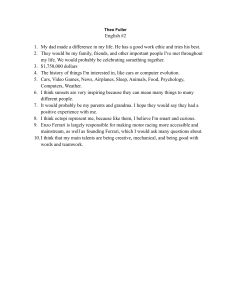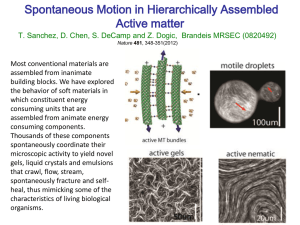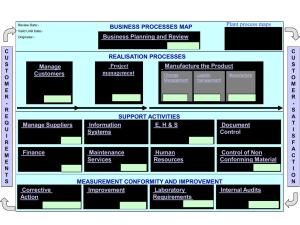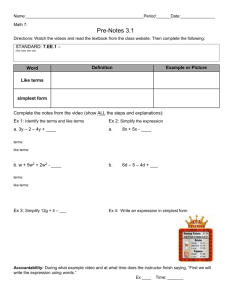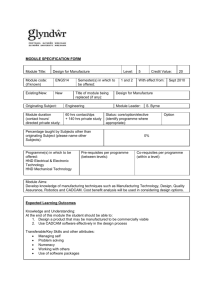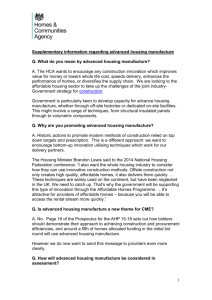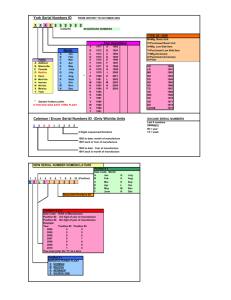M411 System Design - Project Proposal form
advertisement
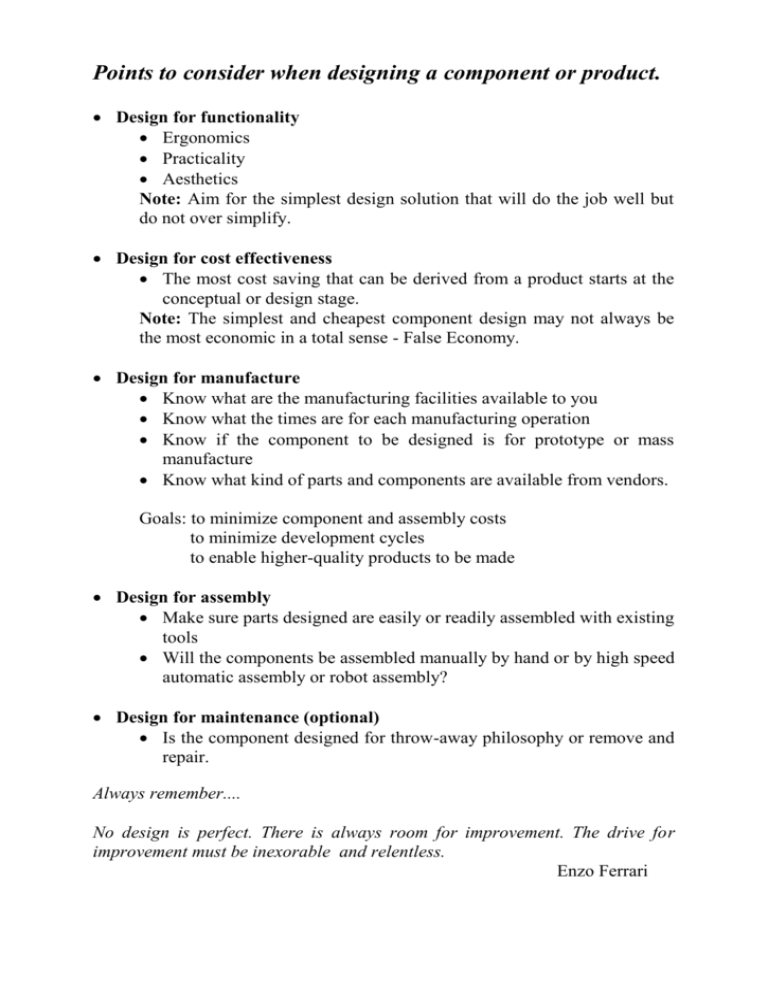
Points to consider when designing a component or product. Design for functionality Ergonomics Practicality Aesthetics Note: Aim for the simplest design solution that will do the job well but do not over simplify. Design for cost effectiveness The most cost saving that can be derived from a product starts at the conceptual or design stage. Note: The simplest and cheapest component design may not always be the most economic in a total sense - False Economy. Design for manufacture Know what are the manufacturing facilities available to you Know what the times are for each manufacturing operation Know if the component to be designed is for prototype or mass manufacture Know what kind of parts and components are available from vendors. Goals: to minimize component and assembly costs to minimize development cycles to enable higher-quality products to be made Design for assembly Make sure parts designed are easily or readily assembled with existing tools Will the components be assembled manually by hand or by high speed automatic assembly or robot assembly? Design for maintenance (optional) Is the component designed for throw-away philosophy or remove and repair. Always remember.... No design is perfect. There is always room for improvement. The drive for improvement must be inexorable and relentless. Enzo Ferrari
